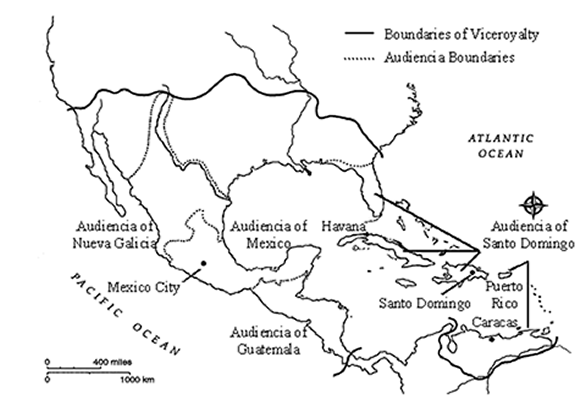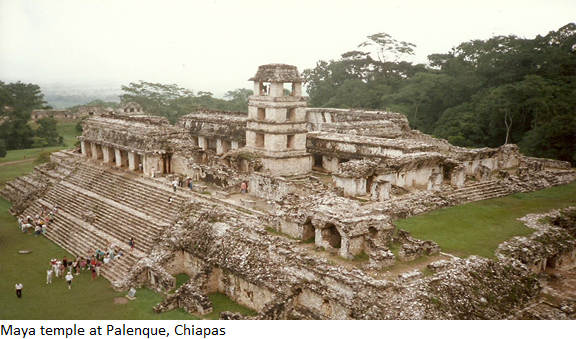Mexican Spanish
1.Defining the dialect area
The territory of contemporary
Historically, the evolution of
Mexican Spanish coincides in a number of respects with the development of
Peruvian Spanish. Like
The Viceroyalty of New Spain

As a natural result of
2. Phonetics and phonology
A striking feature of Mexican Spanish, in the interior of the country at least, is the high rate of unstressed vowel reduction or elision, as in [ˈtɾastəs] or [ˈtɾasts] trastes ‘cooking utensils’ and [ˈpintʃzɣaˈβatʃs] pinches gavachos ‘damned Americans’. This process is most frequent when a vowel is in contact with [s], and [e] is the vowel that is most frequently affected.
In the same regions – most of the
interior of
The tap [ɾ] and the trill [r] are routinely assibilated
throughout central and southern
In terms of the (x) variable, the
articulation in inland
3. Voseo and the associated verbal morphology
Mexican Spanish is fundamentally a tuteante
dialect, voseo being confined to some parts o f the state of
f the state of
4. Syntax
Several syntactic patterns that sound
very ‘non-standard’ to the Peninsular ear are routine in Mexican Spanish. First
and foremost is the more or less conventionalized ellipsis of the negative
particle no in clauses containing the preposition hasta ‘until’:
‘It will <not> be published until the end of the
year.’
(2) Cierran hasta las
nueve.
‘They <don’t> close until
(3) Hasta que tomé la
píldora se me quitó el dolor.
‘Until I took the pill the pain did
<not> go away.’
In each case the sentence only has
the sense indicated by the English translation if the main verb is understood
as being negated.
A second departure from Peninsular
usage involves using interrogative qué in conjunction with the
quantifier tan(to), as in (4) and (5)
below:
‘How serious is the damage?’
(5) ¿Qué tan buen profesor es?
‘How good a teacher is he?’
Thirdly, a sequence that is ungrammatical in Peninsular Spanish, viz. mucho muy, is used colloquially in place of the superlative form in -ísimo, as in (6) below:
Note finally that phenomena relating
to bilingualism are likely to be encountered among Spanish-recessive bilinguals
or in isolated rural regions where the syntactic influence of indigenous
languages has been important historically. One of the most discussed of these
phenomena is the redundant use of verbal clitics, particularly lo, a
tendency that is encountered in language contact areas throughout
5. Lexicon
Mexican Spanish retains a number of items which were once commonplace in the Spanish empire but which have fallen into disuse in Spain and hence, from a Peninsular perspective, can be regarded as archaisms. For example, in requesting repetition of something not understood, the most common Mexican response is ¿Mande?, which in origin at least is the 3rd person sing. subjunctive form of the verb mandar ‘to order’.
Other commonly
heard Mexicanisms include the following: ándale ‘let’s go/OK/I agree’, bolillo ‘American/foreigner’ (derog.), chamaco ‘small child’, charola ‘tray’, chingadera (used of any unspecified object [vulg.]) , chingar ‘to screw/to ruin’ (vulg.), enjarocharse ‘to get amorously involved’, escuincle ‘small child/brat’, ¿ese? ‘why?’, gavacho ‘American’ (derog.) , güero ‘blond’ , híjole ‘wow!’, huerco ‘small child’, mero (e.g. Le
pegué en la mera cabezota ‘I hit him right in the middle of his face’), mocharse ‘to help out’, naco ‘crybaby/in bad taste’, órale ‘OK/come on’, padre ‘brilliant’, pinche ‘cursed/damned’, popote ‘straw’, ya mero ‘almost’
(e.g. Ya mero llegamos ‘We’re almost there’).